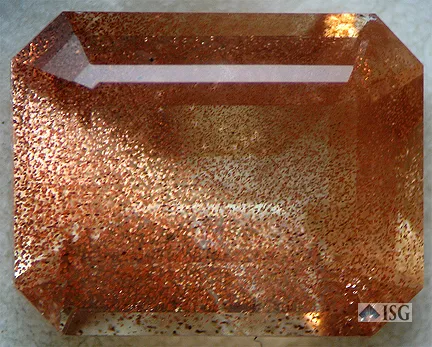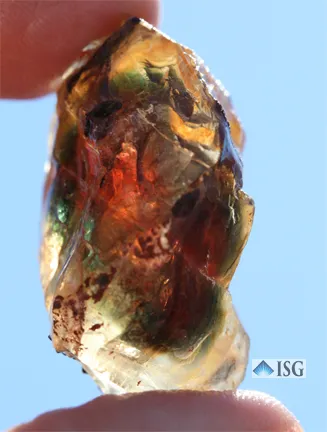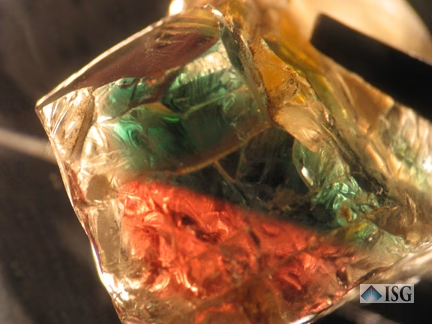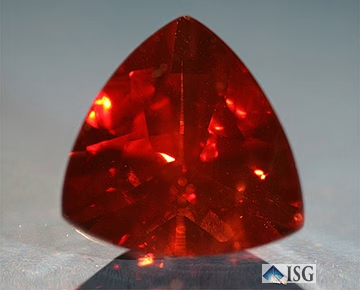Please sign in first
Not a member?

- Home
- Online Education Programs
- ISG Journey Thru Gemology
- ISG Credentials
- Legacy Entrance
- Frequently Asked Questions
- Registry of Graduates
- Careers in Gemology
- Important Program Information
- About the ISG
- Why is the ISG Tuition So Low?
- Testimonials of ISG Students and Graduates
- Meet Your Instructor for your ISG education
- ISG Best Online Gemology School
- Graduate Support Programs
- Ishihara Color Vision Test
- Privacy Policy
- Newsletters
- The Story of Ruby
- Turquoise Investigation by the ISG
- The Story of Petrol Quartz
- Top 5 Myths About Jewelry Insurance Appraisals
- The Story of Time
- The Story of Freshwater Pearls
- The Story of Agates and Jaspers
- Susan Bailey v. Frantz Jewelers, et al.
- The Story of Blue Topaz
- The Story of Tibet Andesine
- The Story of Oregon Sunstone
- The Story of Created Moissanite
- Identifying Lab Created Diamonds
- Black Diamond or Created Moissanite?
- Ebay, the GIA, and Section 230
- Lessons From the Angry Janitor
- Exposing the Truth about Lab-Created Diamonds
- AGTA Hobbles Dealers and Buyers
- Appraisers -v- Gem Labs…a Legal Imbalance!
- Understanding the Classification of Diamonds
- Cremation Diamonds: Insuring and Litigating
- Let’s Talk About Gemology Credentials
- Hometown Jewelers and the Force Majeure Clause
- Following the Critical Angle of Diamond Grading
- When Breitling Brought the Airmen Home
- Let’s Open a Refractometer
- Measuring the Energy of Light
- Quick Reference Guide to Sunstone
- ISG Seeing the Invisible Light
- Contact Us
The Story of Oregon Sunstone
The Story of Oregon Sunstone
Eleven million years ago, in the southeast portion of Oregon, the earth’s surface fractured, allowing vast lava to spread across the land. These cataclysmic events did not occur as volcanic eruptions or destructive geologic blasts but as massive lava flows that poured out of the earth and spread across the land. As one layer cools, another lava flow occurs, covering the previous layers. Layer upon layer, the region was built up over 2500 feet by these lava flows that created what is now known as the Oregon High Desert.

The lava that created these flows contained large phenocrysts (crystals) of labradorite, a member of the feldspar group. These crystals formed deep in the earth and were brought to the surface inside the lava flows that created the Oregon High Desert.

 At some point within the magma chamber, the molten mixture had an unusual abundance of copper elements. Most scientists agree that the copper entered the magma chamber at a time after the Oregon Sunstone labradorite crystals had formed. When this happened, the copper diffused into the labradorite crystals in sizes that ranged from microscopic to relatively large grains, as seen at left with this actual high-magnification photomicrograph of copper inside an Oregon Sunstone. When Oregon Sunstone crystals are found containing these copper grains still intact (in various stages and volumes), the crystals are said to be ‘schiller’ crystals. The term ‘schiller’ refers to the shimmering light effect these copper grains present when viewed in sunlight. This scientific significance, a rare occurrence in the world of geology, is what makes Oregon Sunstone so special and unique.
At some point within the magma chamber, the molten mixture had an unusual abundance of copper elements. Most scientists agree that the copper entered the magma chamber at a time after the Oregon Sunstone labradorite crystals had formed. When this happened, the copper diffused into the labradorite crystals in sizes that ranged from microscopic to relatively large grains, as seen at left with this actual high-magnification photomicrograph of copper inside an Oregon Sunstone. When Oregon Sunstone crystals are found containing these copper grains still intact (in various stages and volumes), the crystals are said to be ‘schiller’ crystals. The term ‘schiller’ refers to the shimmering light effect these copper grains present when viewed in sunlight. This scientific significance, a rare occurrence in the world of geology, is what makes Oregon Sunstone so special and unique.

Oregon Sunstone’s rarity and unique coloring have captivated the attention of world-famous gemstone designers and cutters. The challenge lies in the directional properties of the color due to the copper inside the stone. As the copper oxidizes, it creates beautiful red and green colors, requiring careful planning and execution of the cutting process. The work of Spectrum Award-winning designer John Dyer is a testament to the beauty and rarity of Oregon Sunstone. His exceptional skill in cutting Oregon Sunstone, which has won him numerous gemstone design awards, is easily recognizable, and he has pioneered many new advancements in gemstone design and cutting.
 One of the most prized forms of Oregon Sunstone contains large grains of copper, large enough to show to the unaided eye. These are particularly brilliant in color and in high demand due to their rarity. In these Oregon Sunstones, the copper did not diffuse into small grains but instead cooled and formed very large grains that maintain their copper color inside the gemstone. Every Oregon Sunstone is unique, and the Schiller gemstones are among the most unique.
One of the most prized forms of Oregon Sunstone contains large grains of copper, large enough to show to the unaided eye. These are particularly brilliant in color and in high demand due to their rarity. In these Oregon Sunstones, the copper did not diffuse into small grains but instead cooled and formed very large grains that maintain their copper color inside the gemstone. Every Oregon Sunstone is unique, and the Schiller gemstones are among the most unique.
 The most valuable color of Oregon Sunstone is the deep red color created by the copper inside the crystal. As seen at left, the intensity of the red color is the most sought after by gemstone cutters and most prized by customers and collectors.
The most valuable color of Oregon Sunstone is the deep red color created by the copper inside the crystal. As seen at left, the intensity of the red color is the most sought after by gemstone cutters and most prized by customers and collectors.
 Just as all copper will do, the copper closest to the surface of the Oregon Sunstone crystal will oxidize and turn green. The process is slow, with the outer part of the color slowly turning green as the copper oxidizes. If captured at the right time in the process, as seen at left, this produces beautiful bi-colored Oregon Sunstones that are very rare and always in great demand.
Just as all copper will do, the copper closest to the surface of the Oregon Sunstone crystal will oxidize and turn green. The process is slow, with the outer part of the color slowly turning green as the copper oxidizes. If captured at the right time in the process, as seen at left, this produces beautiful bi-colored Oregon Sunstones that are very rare and always in great demand.

In rare cases, the oxidation process has completely reached all of the gemstone’s copper, and the resulting color is pure green throughout the Oregon Sunstone.
The Sunstone Butte mine is famous for offering intense green-colored sunstone. On the left, you see one of these where the intense green color is present throughout the gemstone. Considering the size of this crystal, put into the hands of a master Oregon Sunstone cutter, this crystal will result in a significant Oregon Sunstone masterpiece.

One of the rare properties of Oregon Sunstone Is a very beautiful and unique dichroism that many of the gemstones exhibit. Here you see a classic example of one these from the Double Eagle #16 Mine as viewed through a London microscope. This unique property means that the gemstone is actually producing the orangey red color and the green color at the same time but our eyes cannot distinguish the colors individually. But as seen through the London dichroscope, we can actually view the two separate colors and see the very unusual, beautiful, and unique property of the dichroism of Oregon Sunstone.
The result of all of the above provides a wide array of unique colors. It is very rare for two Oregon Sunstones to match perfectly. This makes the production of matching earrings a serious challenge and requires two or more gemstones to either be cut from the same rough or much time to compare many possible gemstone crystals. Unique, beautiful, and rare are the three main words to describe Oregon Sunstone.


In early 2004, when Oregon Sunstone began to get a solid financial foothold in the industry and start turning a profit for the Oregon miners, two major television shopping channels began selling a new gemstone reportedly uncovered in the high desert of Tibet. Jewelry Television and Direct Shopping Network touted this material as all-natural and from a new deposit of copper-bearing feldspar that rivaled the Oregon Sunstone in beauty but was sold at a fraction of the cost of Oregon Sunstone. This new copper-bearing feldspar was claimed to be “andesine,” a different type of feldspar than the Oregon Sunstone and one that had never previously occurred in large, gem-quality crystals.
Questions were immediately raised about the authenticity of this material by both the gemological community and consumers.

This is an actual image from the expedition showing an alluvial field where over US$100 million worth of “Tibet andesine” was supposedly recovered.
Because of the questions raised about the claimed natural origin of this new feldspar, Jewelry Television paid for an expedition to the reported mine location. The expedition was led by a world-famous gemologist and many others from various gemology industry organizations. The expedition report was published in the Gems and Gemology publication of the Gemological Institute of America and widely touted as verification that the Tibet Andesine mine did, in fact, exist.
However, the National Gem Testing Center of China sent its own team to the claimed mine location and confirmed that the geology did not produce a feldspar mine. They found what they reported as a “salted” ground of gemstones artificially placed on the surface and a warehouse full of red feldspars that showed definite signs of being artificially treated to create their color. Their report demonstrated that the previous expedition reports were helping to perpetrate a heinous hoax on consumers.
Our next newsletter, The Story of Tibet Andesine, will cover this chapter on Oregon Sunstone’s history. You will not want to miss it.
You can read the full story in our ISG book, Oregon Sunstone…and the Amazing People Who Mine It, from the Blurb bookstore. Available in print or on PDF. Order your copy by clicking on the cover image on the left.

